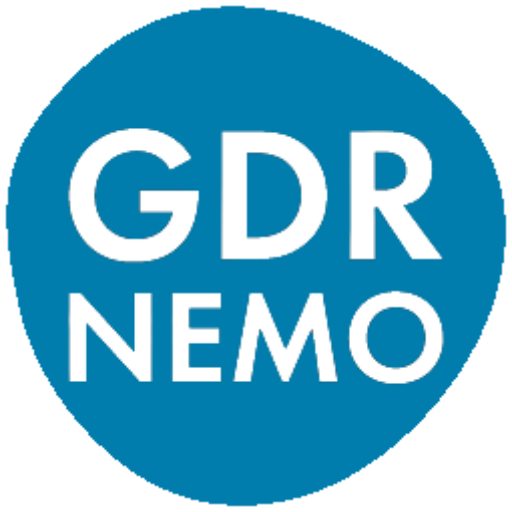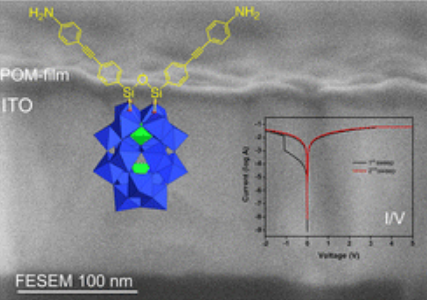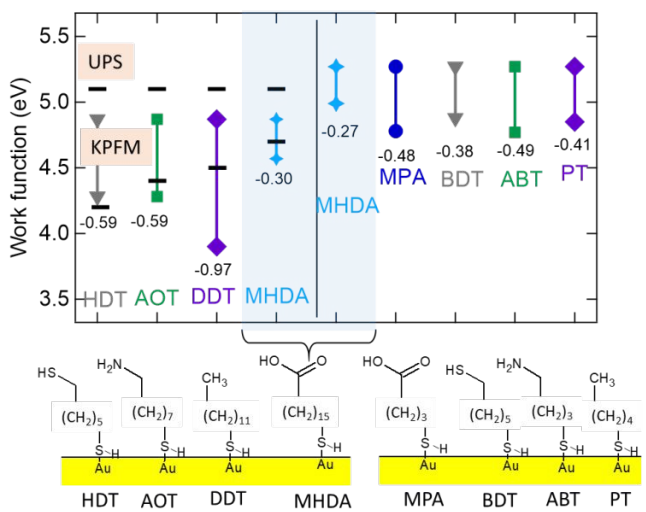Actu, Offres, Réseau
COMBINED MASTER + PHD POSITIONS CALL
NanoGUNE offers scholarships to students to conduct both their Master thesis and their subsequent PhD thesis within one of nanoGUNE’s research groups, for the purpose of acquiring both degrees in conjunction with respective Master and PhD programs at the University of the Basque Country. Opening: 29 January 2024 Deadline: 29 February 2024 Scholarships resolution will be announced: 27 March 2024 The Master scholarships will be of a… Read More
publications, Réseau
Molecular Junctions for Terahertz Switches and Detectors
Molecular electronics targets tiny devices exploiting the electronic properties of the molecular orbitals, which can be tailored and controlled by the chemical structure and configuration of the molecules. Many functional devices have been experimentally demonstrated; however, these devices were operated in the low-frequency domain (mainly dc to MHz). This represents a serious limitation for electronic… Read More
Offres, Réseau
Offre de thèse
Light and matter theory group at the Institute of Physics (FZU) of the Czech Academy of Sciences (CAS) in Prague invites applications for the position: PhD student in theoretical atomic-scale optics of nanostructures The successful candidate (m/f/d) will join a recently established research team lead by Tomáš Neuman that investigates atomic-scale optical properties of molecules… Read More
publications, Réseau
Covalent shaping of polyoxometalate molecular films onto ITO electrodes for charge trapping induced resistive switching
As nano-sized molecular oxides, polyoxometalates (POMs) hold great promise in non-volatile memory materials based on redox-active molecules. Materials processed from solution, by drop-casting, by embedding POMs in polymers, or using layer-by-layer deposition techniques have thus been reported and successfully investigated. Almost all of these examples are electrostatically assembled materials. We herein propose an original route… Read More
publications, Réseau
Destructive quantum interference in meta-oligo(phenyleneethynylene) molecular wires with gold–graphene heterojunctions
Quantum interference (QI) is well recognised as a significant contributing factor to the magnitude of molecular conductance values in both single-molecule and large area junctions. Numerous structure–property relationship studies have shown that para-connected oligo(phenyleneethynylene) (OPE) based molecular wires exemplify the impact of constructive quantum interference (CQI), whilst destructive quantum interference (DQI) effects are responsible for the… Read More
publications, Réseau
Nonuniform STM Contrast of Self-Assembled Tri-n-octyl-triazatriangulenium Tetrafluoroborate on HOPG
We have assembled 4,8,12-tri-n-octyl-4,8,12-triazatrianguleniumtetrafluoroborate (TATA-BF4) on highly oriented pyrolytic graphite (HOPG) and have studied the structure and tunneling properties of this self-assembled monolayer (SAM) using scanning tunneling microscopy (STM) under ambient conditions. We show that the triazatriangulenium cations TATA(+) form hexagonally packed structures driven by the interaction between the aromatic core and the HOPG lattice,… Read More
publications, Réseau
Quantum Transport in Large-Scale Patterned Nitrogen-Doped Graphene
It has recently been demonstrated how the nitrogen dopant concentration in graphene can be controlled spatially on the nano-meter scale using a molecular mask. This technique may be used to create ballistic electron optics-like structures of high/low doping regions; for example, to focus electron beams, harnessing the quantum wave nature of the electronic propagation. Here,… Read More
publications, Réseau
A simple and efficient process for the synthesis of 2D carbon nitrides and related materials
We describe here a new process for the synthesis of very high quality 2D Covalent Organic Frameworks (COFs), such a C2N and CN carbon nitrides. This process relies on the use of a metallic surface as both a reagent and a support for the coupling of small halogenated building blocks. The conditions of the assembly… Read More
publications, Réseau
How far the Chemistry of the Self-Assembly Monolayers on Gold Surfaces Affects their Work Function?
Self-assembled monolayers composed of various long-chain aliphatic molecules and different tail functional groups have been synthesized on the Au(111) surface and characterized by Kelvin Probe Force Microscopy and Ultraviolet Photoelectron Spectroscopy. Carboxy, amino, thio and methyl terminal groups have been considered in the design of self-assembled monolayers with different aliphatic chain lengths (from C6 to… Read More
publications, Réseau
Quantum Transport in Large-Scale Patterned Nitrogen-Doped Graphene
It has recently been demonstrated how the nitrogen dopant concentration in graphene can be controlled spatially on the nano-meter scale using a molecular mask. This technique may be used to create ballistic electron optics-like structures of high/low doping regions; for example, to focus electron beams, harnessing the quantum wave nature of the electronic propagation. Here,… Read More









